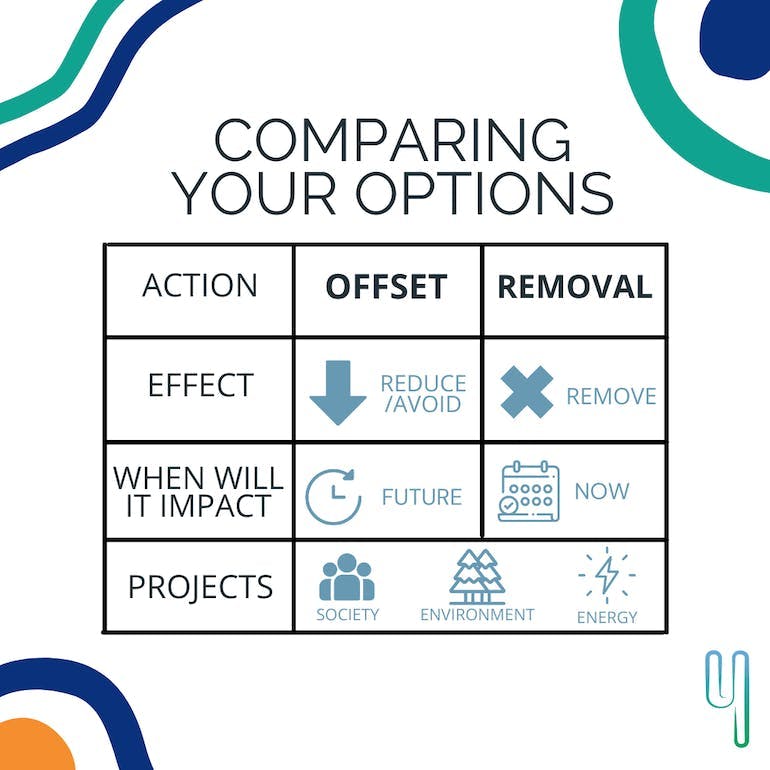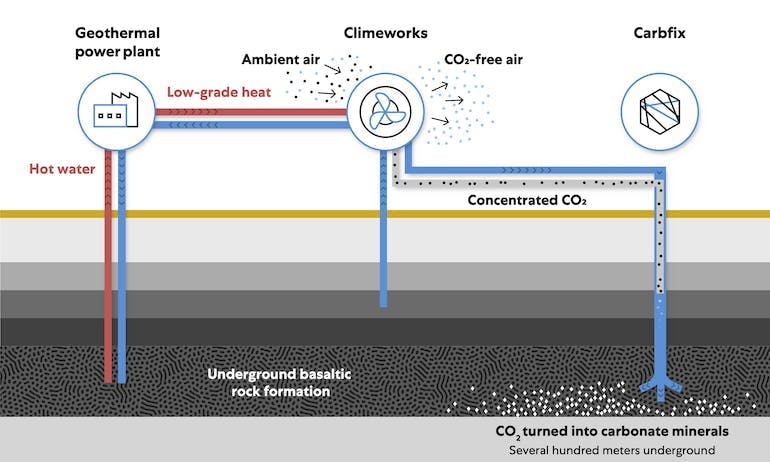Climate Impact
Learn how you can make a more positive climate impact when you travel because the fact is: travel and tourism do generate carbon emissions.
First, we'll cover the industry's impact at a glance. Then, we'll show you a practical framework for how travelers can take action. We'll also cover the differences between carbon offsets and carbon removals, and give some of our top recommendations for carbon calculators.
You can find Yugen Earthside's Climate Action initiatives at the bottom of this page.
Travel & Tourism's Climate Impact at a Glance
- 8%: How much travel & tourism contributed to global carbon emissions from 2009 – 2013 (1)
- 12%: How much travel & tourism is estimated to contribute to global emissions by 2025 (2)
- 49%: How much of travel & tourism emissions are caused by transportation - primarily flights (3)
- 22%: Travel & tourism's transport emissions as a percent of all transport emissions (4)
Climate Impact Framework: "REP" your Planet!
What can travelers do? Here's a simple framework you can use - we call it "REP" your Planet!
"REP" stands for Reduce, Estimate, and Purchase.
Climate Impact Options
The main way travelers can take action after reducing emissions as much as possible is to estimate their carbon emissions and purchase either carbon offsets or carbon removals.
What are Carbon Offsets?
Carbon offsets are activities that compensate for carbon emissions by reducing them elsewhere.
What are Carbon Removals?
Carbon removals are activities that permanently remove CO2 from the atmosphere.
Comparing Carbon Offsets & Carbon Removals
Carbon offsets and carbon removals are both good and necessary.
- Offsets are cheaper, and the benefits will take longer to see.
- Removals are more expensive, and the benefits will be effective immediately.
Using a combination of both will help protect the planet today and tomorrow.

Comparing carbon offsets with carbon removals.
Check out our in-depth blog post, Carbon Offsets & Carbon Removals Explained, for more information.
Purchasing Carbon Offsets
Some of the best and most credible tools for calculating your carbon emissions also allow you to purchase carbon offsets. We've compared over 20 carbon offsetting tools, and here are our three favorites specifically for travelers.
- All our recommendations have clear information about the types of carbon offset projects they support.
- Don't get hung up on the fact that different calculators will give you different results! (Our blog post explains why.)

1. Sustainable Travel International
Sustainable Travel International is great for calculating CO2 emissions for flights, cars, and boats. The metric tons emitted from your trip will be shown, and you can purchase offsets right after you do the calculation.
- Offset one flight. Select "One Trip", choose a one-way, round trip, or multi-city trip and either Economy or Premium, enter the airport codes, then press "Calculate."
- Offset in bulk. Select "Multiple Trips", choose Economy or Premium, and select the number of roundtrip Short, Medium, and Long flights you took before pressing "Calculate." This can be a good option if you want to, for example, make a bulk offset for all your flights last year.
- Offset charter flights. Select "Charter", choose the plane type and flight duration, then press "Calculate."
- Offset driving. Select "Car", choose vehicle type, distance/hours, and miles or kilometers, then press "Calculate."
- Offset boats. Select "Boat", choose vessel type, trip duration, and the number of travelers, then press "Calculate."
Why we love this: It's great to have so many options for flights, cars, and boats in one place; and the user interface is simple to navigate.

2. Jet-Set Offset
With Jet-Set Offset, you can sign up to automatically donate one cent per mile to environmental non-profits fighting climate change (your donations are 100% tax-deductible in the US). After you create your account, choose among their environmental organization partners which one you will donate to.
Why we love this: The convenience of set-it-and-forget-it is wonderful, and the tax deduction is a nice perk!

3. Cool Effect
Don’t worry about calculating flight mileage and simply purchase carbon offsets based on your flight duration:
- 0-6 hours
- 7-9 hours
- 10-12 hours
- 13+ hours
Toggle the “# of Trips” to 2 for a round trip. The results will show the estimated metric tons of CO2 emitted and the cost to offset. You can also offset driving (select the vehicle type and mileage), accommodations (select number of people and number of nights), and cruises (select number of passengers on cruise, mileage, and number of people in your group).
What you pay to carbon offset is 100% tax-deductible in the US, and more than 90% of your donation will go straight toward climate projects.
Why we love this: Cool Effect is an especially useful tool for offsetting in bulk - which aligns with our Estimate philosophies of 'Don’t stress about precision' and 'Any estimation is better than none'; and we really appreciate the transparency about where offset funds go.

Purchasing Carbon Removals
Carbon removal programs are less prevalent than carbon offsetting programs, and we specifically are interested in companies that are targeting travelers. Tomorrow's Air does just that.
Tomorrow's Air
Tomorrow's Air is developing a portfolio of innovative companies using new technology to remove carbon from the atmosphere and store it permanently underground. This is incredibly cool because these carbon capture companies are removing existing CO2 from our atmosphere in real time!
Due to the groundbreaking work this portfolio represents, research and development costs are high which makes carbon removals expensive. By expensive, we mean prohibitively expensive for the average person to actually remove all the carbon associated with even one long-haul flight.
For example:
- Sustainable Travel International estimates that one round-trip flight between Seattle and Paris generates 2.24 metric tons of CO2.
- With Tomorrow's Air's current pricing of $10 to remove 10 kgs of CO2, it would cost $2,240 to remove the carbon from this flight!
Since that's not practical for most people, we encourage travelers to sign up as a Tomorrow's Air subscriber for as little as $10/month. This aligns with our Purchase philosophy of 'Do what you can afford.' It's also helpful for getting travelers into the mindset of consistently giving back to the environment.
How does Carbon Removal Work?
One of Tomorrow's Air's partners is Climeworks. Climeworks uses technology to pull air into a carbon removal collector with a fan. Carbon dioxide is captured on the surface of a filter inside the collectors. Once the filter is full of carbon dioxide, the collector is closed. High-concentration carbon dioxide is mixed with water and pumped deep underground. Through natural mineralization, the CO2 reacts with basalt rock and turns into rock. This is just an example of the type of technology that is being developed for carbon removal.

Diagram illustrating Climeworks' technology.
Yugen Earthside's Climate Action
Yugen Earthside has been proudly net zero since 2022, though this claim comes witih a grain of salt! The term "net zero" can be misleading, because the journey to being evermore sustainable is never really "over", it's not something to be achieved and then forgotten about.
That said, we partnered with an independent third party, Ecolytics, to develop a climate action plan for our company. We use a combination of carbon removals, through a monthly Tomorrow's Air subscription, and carbon offsets through Pachama, as recommended by the Ecolytics team, to achieve our net zero status.
Ecolytics uses software to help companies evaluate the emissions caused by normal business operations. Ecolytics considers climate actions companies are already taking and provides impact reports and recommendations for what else companies can do to lessen their environmental impact. Take a look at our Ecolytics Action Page to see our progress!
Our efforts to make our company net zero are independent of our efforts to inspire and act on behalf of our travelers. For travelers:
- We automatically make carbon removal contributions of $10/traveler through Tomorrow's Air for each trip booked.
- We additionally provide travelers the option to tick a box (literally!) at checkout that will add carbon offsets through Sustainable Travel International to their trip. This is calculated as a percentage of their overall trip cost.
- We also encourage travelers to begin their own subscription to Tomorrow's Air or other carbon removal initiatives.
